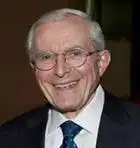Summing Up
There is no shortage of explanations for what seems to be a current bull market in writings about leadership, according to respondents to this column.
Charles Cullinane attributes it to the economic and national insecurity that "has the free world searching for 'leaders' who will show us a way of regaining what we have lost." Another reason for such insecurity, Reinhold Gerbsch proposes, is "the increasing rate of change in the marketplace." Citing an old Buddhist saying, "When the pupil is ready, the master appears," Daniel Harrara suggests that "People need something that gives them safety and answers to their questions."
On another note, Roseanne Landay attributes the current supply of writing on leadership to the fact that during a slow economy, "many companies ask themselves 'how can we do more with less' ... through better ... leadership of (especially people) assets." The timing of this "bull market," Chris Wolfington writes, may be accounted for by "the wave of managers who were hired at fast growing startups into leadership positions they were not qualified to occupy."
Larry Hulsmans concludes that the phenomenon "continues to be driven ... by our natural tendency to look outside us for a 'silver bullet' solution ... Part of the problem lies with us and our fast-paced world where reflection, connection making, and dialogue rarely occur."
What about the future? Tammy Doty takes the somewhat pessimistic view that "There has always been and will always be a dearth of quality leadership ... because self-interest continues to drive human conduct." But Mark Horstman suggests that this doesn't insure a continuation of the current deluge of writing. He says, "Will the bull market last? No. Will it create a market for new ideas, some of which will stick ...? Absolutely."
These comments provoke several questions. As leaders, do we need to plan more time for reflection on what we do? Are we better off spending more time in self-reflection and less time searching for answers from others? Or are there "best practices" of which we need constantly to remind ourselves through reading and dialogue? Is this especially true now? What do you think?
Original Article
Leadership has fascinated us from the times of the Chinese philosophers to the musings of Machiavelli to the present day. Academic interest in it seems to ebb and flow. But judging from the stack of leadership books and articles on my desk, it is positively gushing at the moment. By implication, most of these authors seem to subscribe to the nurture vs. nature thesis-that leaders are made more often than they are born, otherwise they probably wouldn't be so attracted to the subject. (Of them, only Melvin Sorcher and James Bryant, writing in the February issue of the Harvard Business Review, assume that leadership qualities are largely "baked in" by a person's early 20s, suggesting that the primary task is picking the right ones.)
Part of the problem lies with us and our fast-paced world where reflection, connection making, and dialogue rarely occur.
— Larry Hulsmans, Leadership Programs
Several writings on the subject have caught my attention. First is the treatment of what Jim Collins calls "Level 5 Leadership" in perhaps the most systematically researched of the current offerings, Good to Great. The Level 5 Leader who is capable of leading an upward change in the direction of an organization's performance possesses both professional will and personal humility. Think of how many so-called leaders possess one or the other of these but not both.
Primal Leadership, by Daniel Goleman, Richard Boyatzis, and Annie McKee, maintains that the primal job of leadership is to create resonance, a "reservoir of positive feelings" through either resonant leadership styles (emphasizing visionary, coaching, affiliative, and democratic tendencies) or dissonant styles (focused on pacesetting and commanding)-and the ability to know when each is most applicable.
Ronald Heifetz and Marty Linsky, in their book, Leadership on the Line, offer a more sober view of the task of leading adaptive change (driven by the people with the problem) as opposed to technical change (driven by authority). They address, for example, the "faces of danger" (marginalization, diversion, attack, and seduction) and ways of dealing with them. In the end, they conclude, "Exercising leadership is a way of giving meaning to your life by contributing to the lives of others."
Jay Lorsch and Thomas Tierney focus on the special challenge of leading professionals in their book, Aligning the Stars. Here the emphasis is on the limits to leadership in settings where those being led are highly independent. The task is to achieve alignment between the strategic requirements of the business and the needs (very special, in this case) of its key employees. A "survival guide" is needed and provided by the authors.
Why this "killer wave" of new material on leadership at this time, one that threatens to overwhelm the manager who tries to absorb and, heaven forbid, apply it all? Is it a natural result of a downturn in the economy, uncertainties in the environment, or a perceived leadership gap in both the business and the broader world? Will it ebb with an increasing demand for products, services, and jobs? Or is there something more basic happening? If so, what is it? What do you think?

